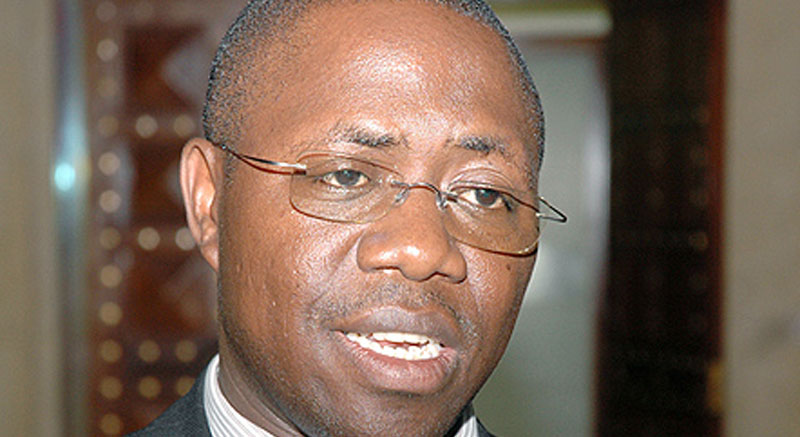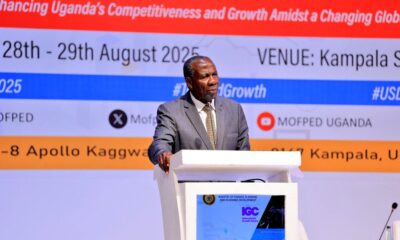Columnists
Local governments sitting on gold
Are you Listening Mr. President
Districts have failed to identify possible investment areas, and roll them out!
Uganda is well-known as a country that is good at developing good policies which never get implemented. We invent and other countries in the region take the ideas and implement them.
In the last two decades, we have written very impressive policies to address nearly every single issue that this country is facing. On the shelves are very elaborate policies that are either accumulating layers of dust or are being implemented haphazardly.
Just to mention a few, the national youth policy (2001), the national forestry policy (2001), the national trade policy (2007), the national oil and gas policy (2008), the national health policy (2009), the national employment policy (2011), the national land policy (2013), and the national coffee policy (2013) are very good documents.
Yet we are in the lead among countries that are sitting on a demographic time bomb due to both youth unemployment and youth ‘unemployableness’. We are also watching on, armed with our elaborate forestry policy, as the country’s natural forest cover gets wiped out.
The trade policy has not helped us to promote exports and save the shilling. Instead we are gradually descending into a laughing stock, importing all sorts of items — from toothpicks to dressed chicken, bathing sponge (ekyangwe) etc.
Neither has our good land policy been implemented to secure property rights. Peasants continue to get evicted from their land, while public lands are being parceled out to the rich and powerful on first-come-first-serve basis.
I could go on and on. Mr. President, the reason I picked my pen this week, was to bring to your attention yet another policy that has gathered its first layer of dust, yet in my view is what this country needs to turn around the fortunes of our people in rural areas. I am talking about the Local Economic Development (LED) Policy.
The LED policy was formulated in February last year to provide a framework for partnerships in economic development at local government level. Any right-thinking person, on reading the LED policy, would agree that it is part of the rethinking of the economic development that Uganda needed yesterday.
Uganda’s economy, as it is structured right now, is a dark horse. Like I’ve written in these pages before, our economy is structured to build a rich country with poor people. Although GDP has been growing, the average household income has remained, by and large, stagnant.
Since 1970, for example, Uganda’s GDP (at current US dollars) has grown from $1.3 billion to over $26 billion today. Yet adjusted average household incomes (adjusted for both inflation and exchange rate depreciation) have changed minimally from $133 in 1970 to $340 today.
In the same period, Malaysia has seen her adjusted average household income rise from $210 to $10,200. Why the paradox? Why is Uganda’s average household income nearly stagnant, yet our GDP is rapidly growing? I wrote about this recently, but let me outline the reasons again as a reminder.
First, our growth is not inclusive. Due to the rising inequality, the growth is going to the few people who are already very rich.
Mr. Sudhir Rupaleria recently graced the Forbes Magazine as one of the richest people in Africa with a net worth of over $1.2 billion. Far from suggesting that it is bad to have rich people in Uganda, it’s quite clear why incomes of other millions of Ugandans have not changed much. Sudhir and his Kwagalana Group colleagues are benefiting from a sort of fundraising from the poor.
Secondly, the high population growth rate in this country (3.03%, the 8th highest in the world and the fertility rate of six children per woman, the 6th highest in the world) simply means that every year more poverty candidates are born and straight away enter the poverty trap.
Thirdly, the large proportion of our GDP is produced by foreigners, such that much of the proceeds from these businesses or factories go to the stake owners abroad leaving Ugandans with peanuts.
Forth is the high marginal propensity to import. Each year, we spend on average $7.8 billion on imports from Kenya, China, India, the EU and other foreign sources.
This simply means that we keep donating our GDP to the people from those countries where we import from. By the way, importing what? Everything! Including what we could produce domestically at very low cost.
Upon this background, the local government ministry, with technical help from the United Nations Development Program (UNDP), came up with a policy to make the average Ugandan more productive and enable local governments refocus their mandate from being mere instruments of service delivery to becoming catalysts of wealth creation and economic development.
The Vision for the LED policy is to build “a vibrant and competitive private sector-led local economy for poverty reduction, wealth creation and prosperity” in Uganda.
Its mission is “to create a local governance mechanism which promotes a conducive economic and political environment for private sector investment, employment in local areas for improved household incomes and service delivery.”
While its overall goal of the LED policy is “a transformed local government system that facilitates effective business oriented locality development with a focus on poverty reduction and sustainable wealth creation”.
Where do you find a better strategy than this? We are all aware that local governments in Uganda face a number of challenges, among which include: (1) absence of strategies to stimulate local and community enterprise development; (2) inadequate infrastructure development, which makes it difficult for entrepreneurs in rural districts to access business development services and markets.
Others are: (3) low household incomes and savings, which leads to a narrow revenue base leading to low incomes for the local governments and over dependence on central government’s grants; and (4) ineffective participation and coordination of stakeholders in locality development.
The LED is clearly the best response to these challenges. The policy is calling upon local governments to develop “Regional Strategic Investment Plans” identifying their local comparative advantages to avoid unnecessary competition and duplication.
Many other pragmatic and strategic interventions were suggested, including: promotion of value-chains and cluster development at local government level, establishment of one-stop-centre at every local government for advisory services, business networking, guidance and access to financial services, and development and implementation of marketing strategy for LED for each local government, with special attention to locality, infrastructure and services, among others.
The financing strategies were also very well identified, including promotion of value-chain financing to increase competitiveness for export business; mobilisation of private sector to participate in LED initiatives, as well as improving access to commodity and financial markets by women and youth entrepreneurs in villages.
Reading the LED policy leaves one wondering what exactly befell our country. How can we fail to implement such a powerful strategy? In March this year, local government leaders from across the country met in Kampala for their 10th Joint Annual Review of Decentralisation meeting.
When asked why they were not implementing such a good policy they cited the lack of clear linkage between the National Development Plan, the LED policy, Operation Wealth Creation and the national budget. Thus no funding is dedicated to financing the LED policy.
The local governments also said they lacked capacity (both in terms of the required staffing numbers and also in terms of technical abilities) to implement the LED policy, and thus had failed to develop local economic and business assessments which are required to formulate the strategic plans for implementation of the LED policy.
These surely are surmountable challenges which shouldn’t keep such a game changing policy in the limbo where it is likely to remain for the foreseeable future as the country continues to descend into socio-economic abyss.
This week I was invited by the ACODE (Advocates Coalition for Development and Environment) to make sense of the LED policy for the local government leaders from five districts of Mbale, Bududa, Tororo, Moroto and Nakapiripirit. None of the leaders present had ever even heard of the policy!
I told them that although it was important to create a conducive environment for attracting private investment in their areas, this was not sufficient to guarantee and ensure sustainable wealth creation in these rural districts.
I implored them to identify possible investment areas and develop bankable investment plans based on their local priorities and roll them out as the LED policy guides them.
I also requested these leaders to avoid over politicisation of the LED agenda. All local governments need to come out of the slumber they are in, develop investment ideas and support their populations to raise household incomes.
This is what is missing in the prevailing economic strategy that is focusing on developing the macroeconomy without thinking about the micro aspects of the economy.
Comments






















